
Jacob Tome wasn’t born in Port Deposit, Maryland, but in 1833 he made it his home for the rest of his life. Until then, and for a time thereafter, this man of little formal education taught school and worked at various short-term jobs.
Port Deposit was then and still is a small town. Its location is at a point along the Susquehanna River where a high falls blocks shipping access from the river to the Chesapeake Bay.
Barges and ships from above the falls arrive here at a “port of deposit” and off-load outgoing cargo. Shipments were then transferred to vessels that had sailed up the bay to that point below the falls.
Tome was working as a hotel clerk when he noticed a load of unsold lumber in town and approached its owner, offering to sell it. When it was sold, the owner, David Rinehart, offered him a partnership in what became Rinehart and Tome, first a lumber company and later a shipping company.
The company prospered and Tome invested his income in warehouses, lumber forests, several canals, bridges that spanned the Susquehanna near Port Deposit, and ultimately in railroads that carried finished lumber and other cargo across the East Coast.
Tome developed the land he’d cleared of forests into towns, farms, and eventually four banks. He was an ardent supporter of Abraham Lincoln and was elected to the Maryland Senate in 1864.
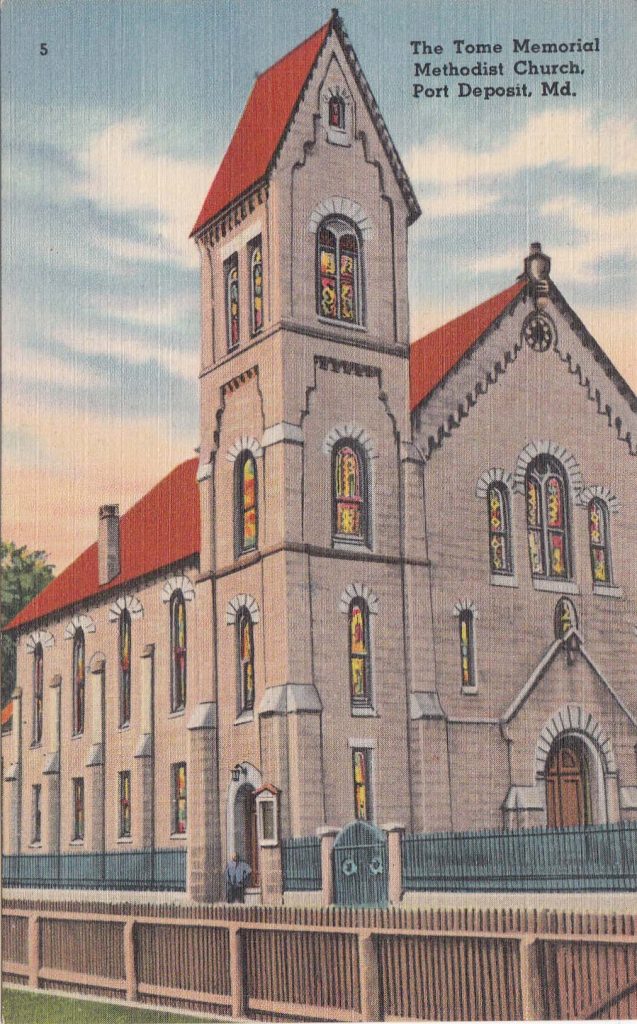
He was a philanthropist, giving money to numerous churches and colleges, including Dickenson College in Pennsylvania to which he gave $25,000 for the Tome Scientific Building and became a trustee of the college. In Port Deposit he built the Tome Memorial Methodist Church.
His greatest legacy, however, was the Jacob Tome Institute in Port Deposit. He died in 1898, consequently he never saw the construction of the school that bears his name. His vision was clear, however: it was not a college but a preparatory boarding school for boys, whether as mechanics or for college.
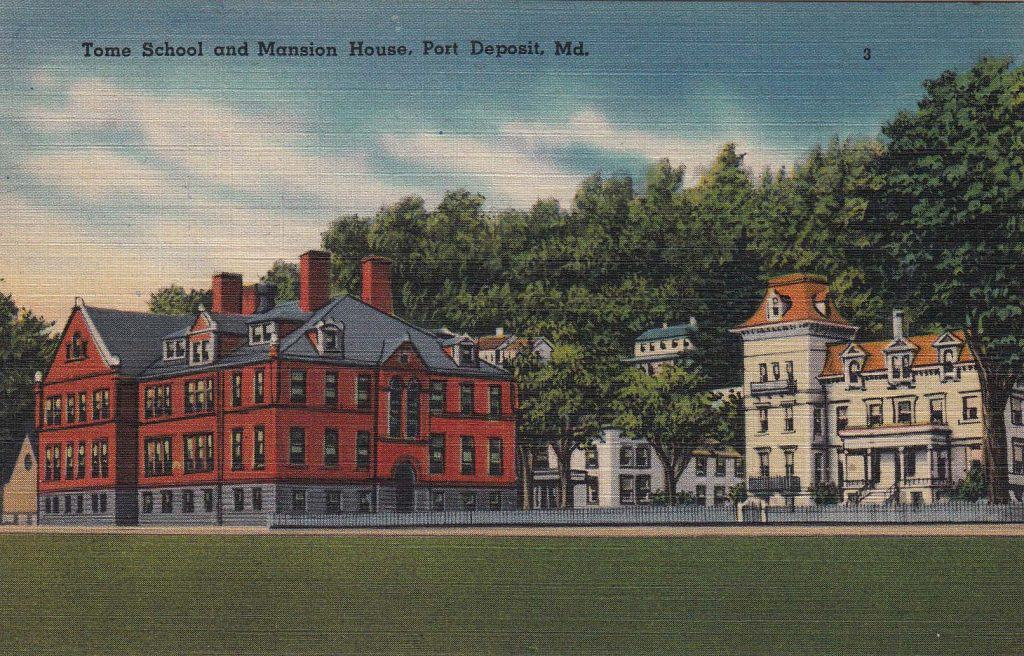
The Institute’s trustees purchased land on the palisades high above the Susquehanna in Port Deposit. Frederic Law Olmstead participated in laying out the grounds and architectural competitions were held to design the buildings, which were constructed of granite from nearby quarries.
The grounds were separated by paths made of “Telford,” which is crushed stone rolled heavily into the earth.
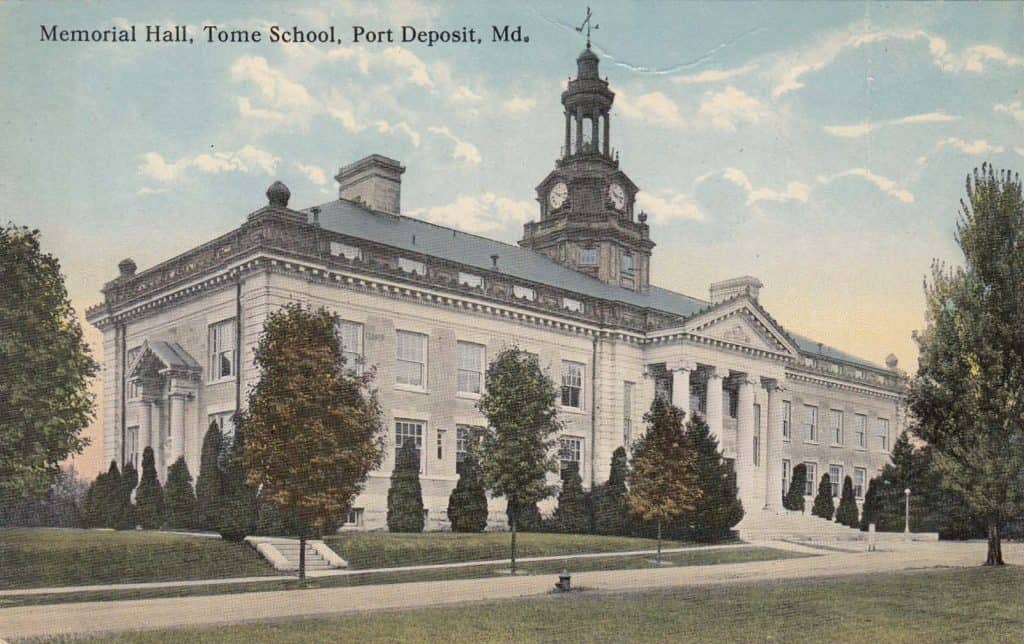
Four residence halls — Harrison, Jackson, Madison, and Van Buren — were constructed with electric lighting, cross ventilation, steam heat, and each had large living rooms. Each floor had its own bathroom. All the halls were carpeted, and each bedroom had its own rug. Light was provided from lamps with shades; each enameled iron bedstand had its own mattress and a full set of bedding. There was also a bedside table.
Each floor had a resident housemaster and staff to maintain each room, which was designed for a single boy.
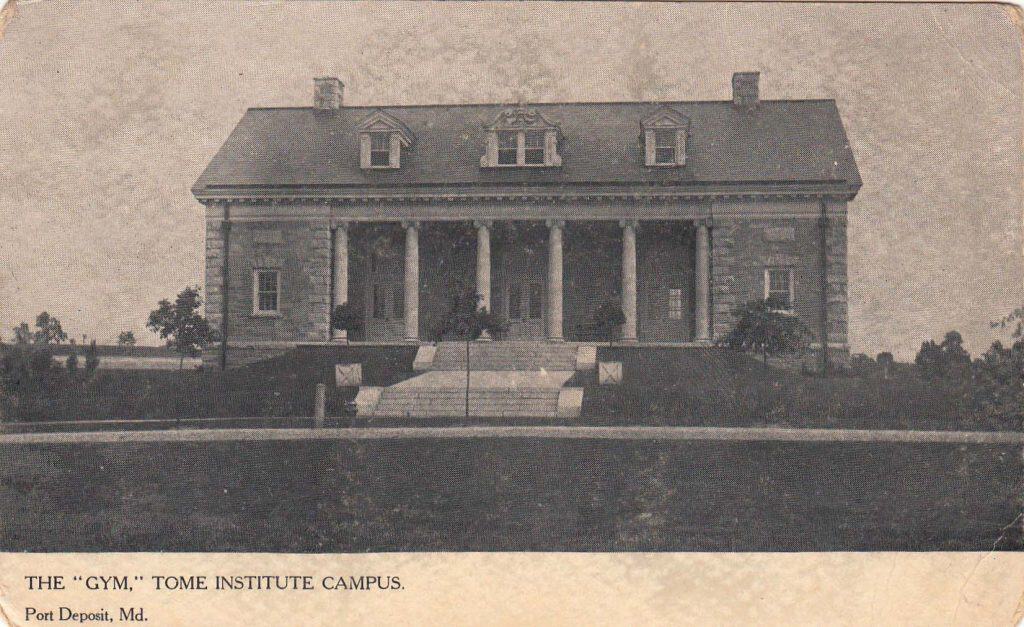
The Monroe Building, the two-story gymnasium, had an additional nine rooms. It was situated to overlook the athletic fields and was fitted out with cypress wood. There were six bathing stalls that contained the most modern equipment. The swimming pool was on the lower floor.
The batting cage was a 60 x 100 feet concrete building with walls 20 feet high. The room’s apex was 30 feet above the ground and had double skylights with electric lights for use on gloomy days. It was busiest during the winter season.
The batting cage, dining hall, and tennis courts were sited to be convenient to Memorial Hall.
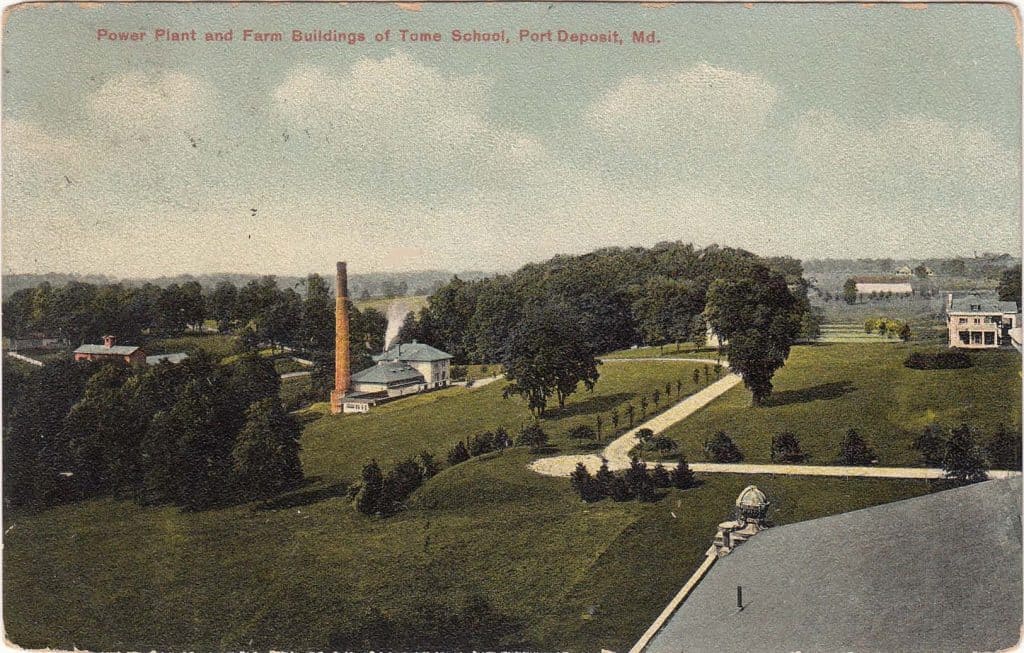
The power plant was designed to provide alternating electric current for all electrical needs. It was carried through underground conduits and the plant had enough auxiliary apparatus to ensure smooth operation. Steam and hot water were provided to all buildings by well-insulated underground pipes.
The infirmary contained two wards, bathrooms, an office, reception, and dining room. Rooms for a physician and nurse were also provided. An x-ray machine in the school’s physical laboratory was always at the service of the infirmary.
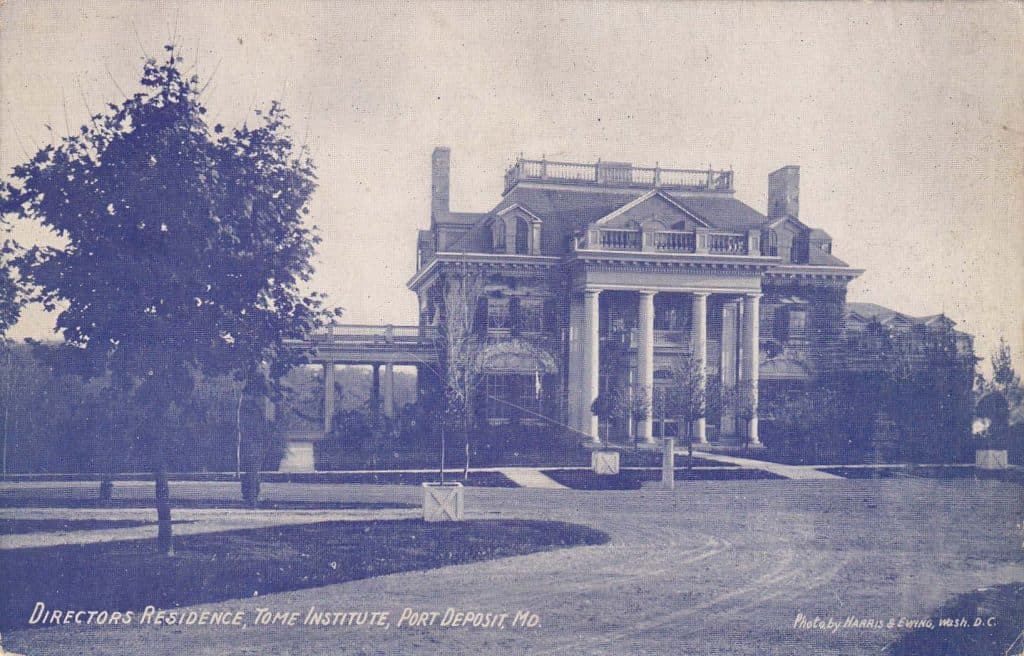
Other buildings included the director’s residence, eleven residences for masters, and a steam laundry. In all there were 22 buildings on the campus.
***
At his death, Tome left an estate valued at $89 million to his wife. One of his investments was the Cecil National Bank, so she became the first woman to serve as president of a national bank. He also left an endowment for the Institute of $2 million,
The Great Depression did great damage to the school; it closed in 1941. When the United States entered World War II, the property and some surrounding lands were condemned for use as a naval training center. By 1976, when it closed, the Naval Training Center Bainbridge had graduated some 500,000 recruits.
In 1979, the Job Corps program occupied the school. In 2000, the site was taken over by the State of Maryland and was subsequently given to the Bainbridge Development Corporation.
There is still a Tome School, in nearby North East, Maryland, a private school that carries on the vision of Jacob Tome.
But the original Tome School is gone.
***
There are numerous YouTube videos posted by curiosity seekers and trespassers showing the vandalism that has taken place in all the buildings. Arsonists burned all but the shell of Memorial Hall in 2014. Other buildings on the campus are also damaged hulks.
Matthew Christopher, an accomplished photographer, has thoughtfully photographed the remains of the Tome School. At a website, “Abandoned America,” the result, is a careful documentary of what was once a noble idea by a man who gave back to the community that had made him wealthy.
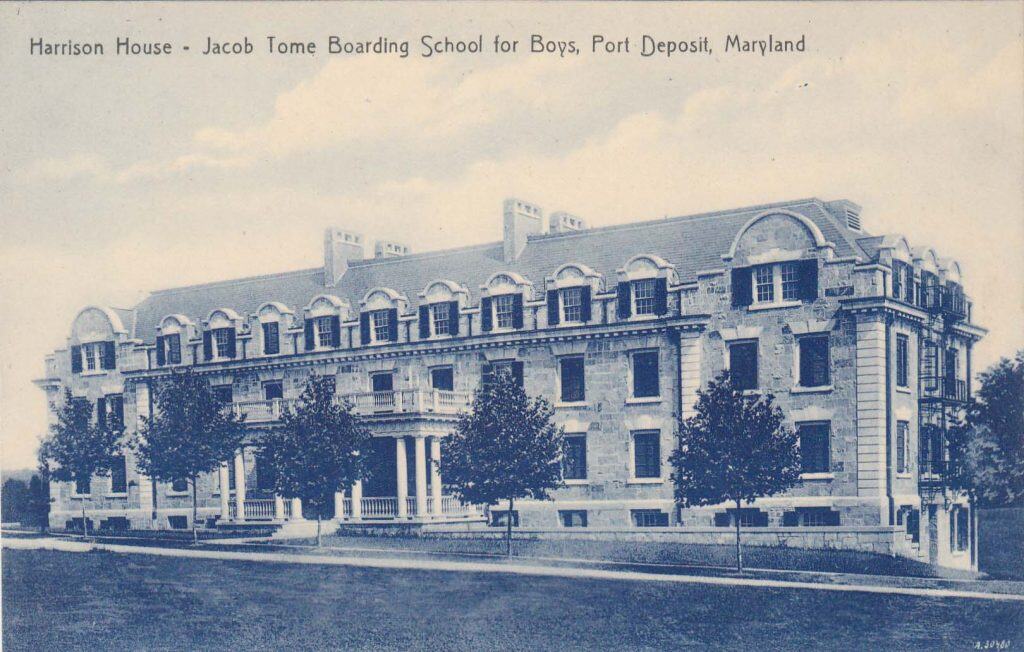
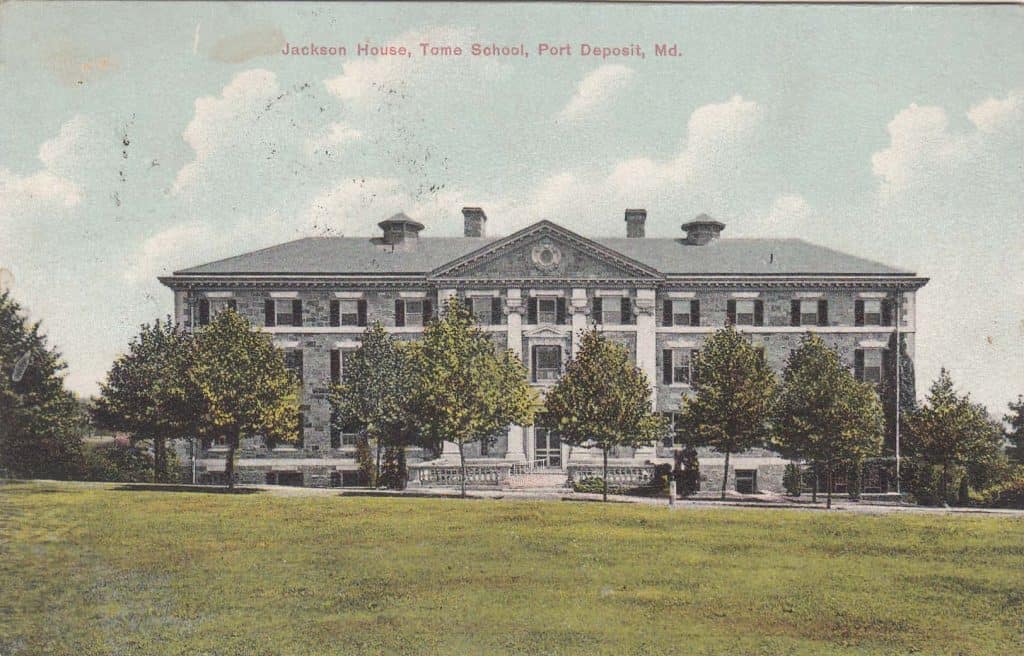
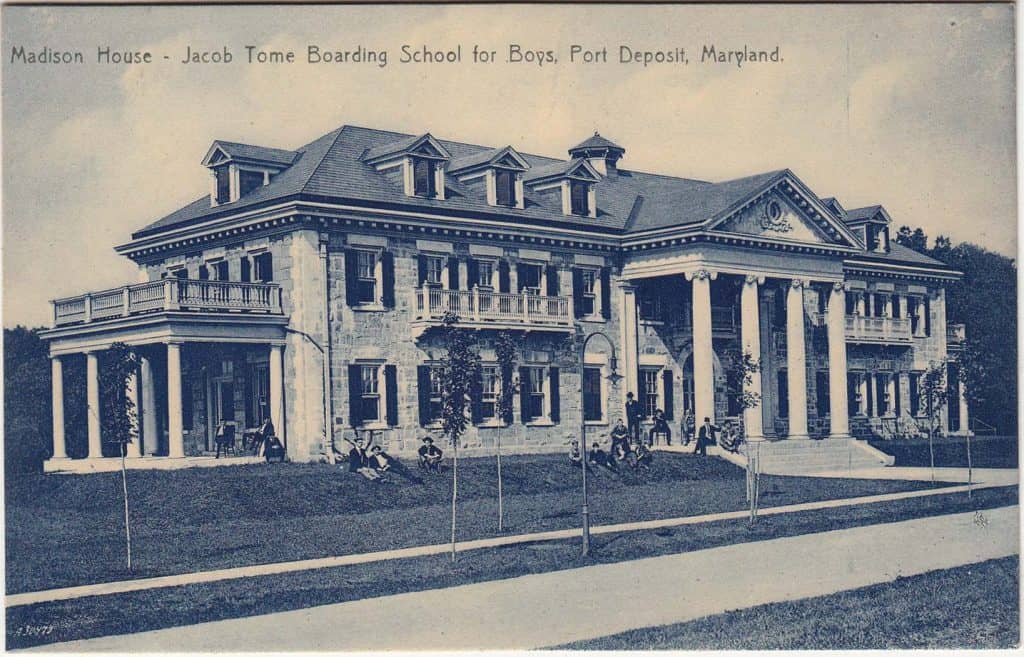
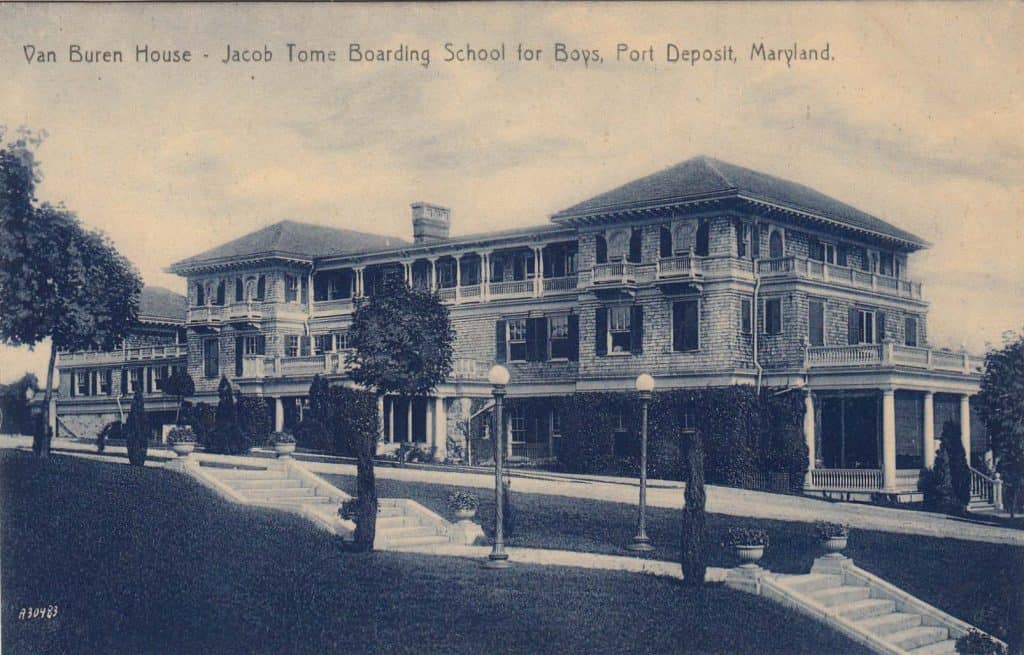
I had never heard of the Tome School until today, but I’m inspired to learn more about the institution’s history.
A great article.
Fascinating. Thanks for the original information and the sad update.